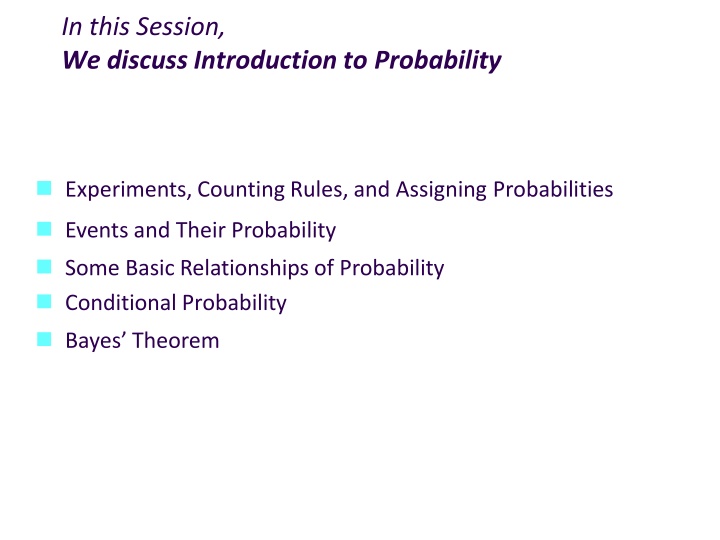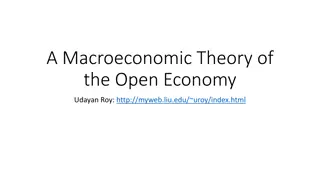JaxCareConnect - Creating a Primary Health Care Safety Net System
Focus on addressing the lack of coordinated care in Duval County through JaxCareConnect, aiming to provide high-quality healthcare access to all residents regardless of insurance status or ability to pay. Targeting issues like limited access to healthcare, lack of information among underserved populations, and barriers leading to higher costs of care.
Download Presentation

Please find below an Image/Link to download the presentation.
The content on the website is provided AS IS for your information and personal use only. It may not be sold, licensed, or shared on other websites without obtaining consent from the author.If you encounter any issues during the download, it is possible that the publisher has removed the file from their server.
You are allowed to download the files provided on this website for personal or commercial use, subject to the condition that they are used lawfully. All files are the property of their respective owners.
The content on the website is provided AS IS for your information and personal use only. It may not be sold, licensed, or shared on other websites without obtaining consent from the author.
E N D
Presentation Transcript
In this Session, We discuss Introduction to Probability Experiments, Counting Rules, and Assigning Probabilities Events and Their Probability Some Basic Relationships of Probability Conditional Probability Bayes Theorem
Uncertainties Managers often base their decisions on an analysis of uncertainties such as the following: What are the chances that sales will decrease if we increase prices? What is the likelihood a new assembly method will increaseproductivity? What are the odds that a new investment will be profitable?
Probability Probability is a numerical measure of the likelihood that an event will occur. Probability values are always assigned on a scale from 0 to 1. A probability near zero indicates an event is quite unlikely to occur. A probability near one indicates an event is almost certain to occur.
Probability as a Numerical Measure of the Likelihood of Occurrence Increasing Likelihood of Occurrence 0 .5 1 Probability: Theevent is very unlikely tooccur. The event is almost certain to occur. The of the event is just as likely as it is unlikely. occurrence
Statistical Experiments In statistics, the notion of an experiment differs somewhat from that of an experiment in the physical sciences. In statistical experiments, probability determines outcomes. Even though the experiment is repeated in exactly the same way, an entirely different outcome may occur. For this reason, statistical experiments are some- times called random experiments.
An Experiment and Its Sample Space An experiment is any process that generates well- defined outcomes. The sample space for an experiment is the set of all experimental outcomes. An experimental outcome is also called a sample point.
An Experiment and Its Sample Space Experiment Experiment Outcomes Toss a coin Inspection a part Conduct a salescall Roll a die Play a footballgame Head, tail Defective, non-defective Purchase, no purchase 1, 2, 3, 4, 5, 6 Win, lose, tie
An Experiment and Its Sample Space Example: Aditya has invested in two stocks, Indian Oil and Vedanta. Aditya has determined that the possible outcomes of these investments three months from now are as follows. Aditya Investments Investment Gain or Loss in 3 Months (in Rs.000) Vedanta 8 2 IndianOil 10 5 0 20
A Counting Rule for Multiple-Step Experiments If an experiment consists of a sequence of k steps in which there are n1 possible results for the first step, n2 possible results for the second step, and so on, then the total number of experimental outcomes is given by (n1)(n2) . . . (nk). A helpful graphical representation of a multiple-step experiment is a tree diagram.
A Counting Rule for Multiple-Step Experiments Aditya Investments Aditya Investments can be viewed as a two-step experiment. It involves two stocks, each with a setof experimental outcomes. Example: IndianOil: Vedanta: Total Number of Experimental Outcomes: n1 =4 n2 =2 n1n2 = (4)(2) =8
Tree Diagram Example: Aditya Investments IndianOil (Stage 1) Vedanta (Stage2) Experimental Outcomes Gain8 (10,8) Gain Rs.18,000 (10,-2) Gain Rs.8,000 Lose2 Gain10 Gain8 (5, 8) Gain Rs.13,000 (5,-2) Gain Rs.3,000 Lose2 Gain5 Gain8 (0, 8) Gain Rs.8,000 Even (0,-2) Lose Rs.2,000 Lose2 Lose20 Gain8 (-20,8) Lose Rs.12,000 (-20,-2) Lose Rs.22,000 Lose2
Counting Rule for Combinations Number of Combinations of N Objects Taken n at a Time A second useful counting rule enables us to count the number of experimental outcomes when n objects are to be selected from a set of N objects. N= N N! n = C n n!(N n)! N! = N(N 1)(N 2) . . .(2)(1) n! = n(n 1)(n 2) . . .(2)(1) 0! = 1 where:
Counting Rule for Permutations Number of Permutations of N Objects Taken n at a Time A third useful counting rule enables us to count the number of experimental outcomes when n objects are to be selected from a set of Nobjects, where the order of selection is important. N = N! PN= n! n (N n)! n N! = N(N 1)(N 2) . . .(2)(1) n! = n(n 1)(n 2) . . .(2)(1) 0! = 1 where:
Assigning Probabilities Basic Requirements for Assigning Probabilities 1. The probability assigned to each experimental outcome must be between 0 and 1,inclusively. 0 < P(Ei)< 1 for all i where: Ei is the ith experimental outcome and P(Ei) is its probability
Assigning Probabilities Basic Requirements for Assigning Probabilities 2. The sum of the probabilities for all experimental outcomes must equal 1. P(E1) + P(E2) + . . . + P(En) =1 where: n is the number of experimental outcomes
Assigning Probabilities Classical Method Assigning probabilities based on the assumption of equally likely outcomes Relative Frequency Method Assigning probabilities based on experimentation or historical data Subjective Method Assigning probabilities based on judgment
ClassicalMethod Example: Rolling a Die If an experiment has n possible outcomes, the classical method would assign a probability of 1/n to each outcome. Experiment: Rolling a die Sample Space: S = {1, 2, 3, 4, 5, 6} Probabilities: Each sample point hasa 1/6 chance of occurring
Relative FrequencyMethod Example: Book Rental Book Rental would like to assign probabilities to the number of books it rents each day. Office records show the following frequencies of daily rentals for the last 40 days. Number of BooksRented 0 1 2 3 4 Number of Days 4 6 18 10 2
Relative FrequencyMethod Example: Each probability assignment is given by dividing the frequency (number of days) by the total frequency (total number of days). Book Rental Number of books Rented 0 1 2 3 4 Number of Days Probability .10 .15 .45 .25 .05 1.00 4 6 18 10 2 40 4/40
Subjective Method When economic conditions and a company s circumstances change rapidly it might be inappropriate to assign probabilities based solely on historical data. We can use any data available as well as our experience and intuition, but ultimately a probability value should express our degree of belief that the experimental outcome will occur. The best probability estimates often are obtained by combining the estimates from the classical or relative frequency approach with the subjectiveestimate.
SubjectiveMethod Example: An analyst made the following probability estimates. Aditya Investments Net Gain or Loss Rs.18,000 Gain Rs.8,000 Gain Rs.13,000 Gain Rs.3,000 Gain Rs.8,000 Gain Rs.2,000 Loss Rs.12,000 Loss Rs.22,000 Loss Probability .20 .08 .16 .26 .10 .12 .02 .06 Exper. Outcome (10, 8) (10, 2) (5, 8) (5, 2) (0, 8) (0, 2) ( 20, 8) ( 20, 2)
Events and Their Probabilities An event is a collection of sample points. The probability of any event is equal to the sum of the probabilities of the sample points in the event. If we can identify all the sample points of an experiment and assign a probability to each,we can compute the probability of an event.
Events and Their Probabilities Example: Aditya Investments Event M = Indian Oil Profitable M = {(10, 8), (10, 2), (5, 8), (5, 2)} P(M) = P(10, 8) + P(10, 2) + P(5, 8) + P(5, 2) = .20 + .08 + .16 + .26 = .70
Events and Their Probabilities Example: Aditya Investments Event C = Vedanta Profitable C = {(10, 8), (5, 8), (0, 8), ( 20,8)} P(C) = P(10, 8) + P(5, 8) + P(0, 8) + P( 20,8) = .20 + .16 + .10 + .02 = .48
Some Basic Relationships of Probability There are some basic probability relationships that can be used to compute the probability of an event without knowledge of all the sample point probabilities. Complement of anEvent Union of Two Events Intersection of Two Events Mutually ExclusiveEvents
Complement of an Event The complement of event A is defined to be the event consisting of all sample points that are not in A. The complement of A is denoted by Ac. Sample SpaceS Ac EventA Venn Diagram
Union of Two Events The union of events A and B is the event containing all sample points that are in A or B or both. The union of events A and B is denoted by A B Sample SpaceS EventA EventB
Union of Two Events Example: Aditya Investments Event M = Indian OilProfitable Event C = Vedanta Profitable M C = Indian OilProfitable or Vedanta Profitable (or both) M C = {(10, 8), (10, 2), (5, 8), (5, 2), (0, 8), ( 20,8)} P(M C) = P(10, 8) + P(10, 2) + P(5, 8) + P(5, 2) + P(0, 8) + P( 20,8) = .20 + .08 + .16 + .26 + .10 + .02 = .82
Intersection of TwoEvents The intersection of events A and B is the set of all sample points that are in both A and B. The intersection of events A and B is denoted by A Sample SpaceS EventA EventB Intersection of A and B
Intersection of TwoEvents Example: Aditya Investments Event M = Indian Oil Profitable Event C = Vedanta Profitable M = Indian Oil Profitable and VedantaProfitable M C = {(10, 8), (5,8)} P(M C) = P(10, 8) + P(5,8) C = .20 + .16 = .36
Addition Law The addition law provides a way to compute the probability of event A, or B, or both A and B occurring. The law is written as: P(A B) = P(A) + P(B) P(A B)
Addition Law Example: Aditya Investments Event M = Indian Oil Profitable Event C = Vedanta Profitable M C = Indian OilProfitable or Vedanta Profitable P(M C) =.36 We know: Thus: P(M) = .70, P(M C) = P(M) + P(C) P(M C) = .70 + .48 .36 = .82 (This result is the same as that obtained earlier using the definition of the probability of an event.) P(C) = .48,
Mutually Exclusive Events Two events are said to be mutually exclusive if the events have no sample points in common. Two events are mutually exclusive if, when one event occurs, the other cannot occur. Sample SpaceS EventA EventB
Mutually Exclusive Events If events A and B are mutually exclusive, P(A B) = 0. The addition law for mutually exclusive events is: P(A B) = P(A) + P(B) There is no need to include P(A B)
Conditional Probability The probability of an event given that another event has occurred is called a conditional probability. The conditional probability of A given B is denoted by P(A|B). A conditional probability is computed as follows : P(A|B) =P(A B) P(B)
Conditional Probability Example: Aditya Investments Event M = Indian OilProfitable Event C = Vedanta Profitable P(C|M) = Vedanta Profitable given Indian Oil Profitable P(M C) = .36, P(M) =.70 Thus: P(C|M) =P(C M)=.36= We know: .5143 P(M) .70
MultiplicationLaw The multiplication law provides a way to compute the probability of the intersection of two events. The law is written as: P(A B) = P(B)P(A|B)
MultiplicationLaw Example: Aditya Investments Event M = Indian OilProfitable Event C = Vedanta Profitable M C = Indian Oil Profitable and Vedanta Profitable We know: Thus: P(M C) = P(M)P(C|M) P(M) = .70, P(C|M) =.5143 = (.70)(.5143) = .36 (This result is the same as that obtained earlier using the definition of the probability of an event.)
Joint Probability Table Vedanta Not Profitable (Cc) Profitable (C) Indian Oil Total Profitable(M) .70 .36 .34 Not Profitable(Mc) .30 .12 .18 1.00 Total .48 .52 Joint Probabilities (appear in thebody of the table) Marginal Probabilities (appear in themargins of the table)
Independent Events If the probability of event A is not changed by the existence of event B, we would say that events A and B are independent. Two events A and B are independentif: P(A|B) = P(A) P(B|A) =P(B) or
Multiplication Law for Independent Events The multiplication law also can be used as a test to see if two events are independent. The law is written as: P(A B) = P(A)P(B)
Multiplication Law for Independent Events Example: Aditya Investments Event M = Indian Oil Profitable Event C = Vedanta Profitable Are events M and C independent? Does P(M C) = P(M)P(C)? P(M C) = .36, But: P(M)P(C) = (.70)(.48) = .34, not.36 We know: P(M) = .70, P(C) =.48 Hence: M and C are not independent.
Mutual Exclusiveness and Independence Do not confuse the notion of mutually exclusive events with that of independent events. Two events with nonzero probabilities cannot be both mutually exclusive and independent. If one mutually exclusive event is known to occur, the other cannot occur.; thus, the probability of the other event occurring is reduced to zero (and they therefore dependent). are Two events that are not mutually exclusive, might or might not be independent.
BayesTheorem Often we begin probability analysis with initial or prior probabilities. Then, from a sample, special report, or a product test we obtain some additional information. Given this information, we calculate revised or posterior probabilities. Bayes theorem provides the means for revising the prior probabilities. Application of Bayes Theorem New Prior Posterior Probabilities Information Probabilities
BayesTheorem Example: Gupta Stores A proposed shopping center will provide strong competition to businesses like Gupta Stores. The owner of Gupta Stores therefore, is very carefully looking into the probability of shopping center being built. The shopping center cannot be built unless a zoning change is approved by the Municipal Corporation. The planning board must first make a recommendation, for or against the zoning change, to the Corporation. Based on the recommendation of the planning board Municipal Corporation may approve or disapprove the zoning change.
Prior Probabilities Example: GuptaStores Let: A1 = Municipal Corporation approves the zoningchange A2 = Municipal Corporation disapproves thechange Using subjective judgment: P(A1) = .7, P(A2) = .3
New Information Example: Gupta Stores The planning board has recommended against the zoning change. Let B denote the event of a negative recommendation by the planning board. Given that B has occurred, should Gupta Stores revise the probabilities that the Municipal Corporation will approve or disapprovethe zoning change?
Conditional Probabilities Example: Gupta Stores Past history with the planning board and the Municipal Corporation indicates the following: P(B|A1) = .2 P(B|A2) = .9 Hence: P(BC|A1) = .8 P(BC|A2) =.1
TreeDiagram Example: GuptaStores Planning Board Municipal Corporation Experimental Outcomes P(B|A1) =.2 P(A1 B) =.14 P(A1) =.7 P(A1 Bc) =.56 P(Bc|A1) =.8 P(B|A2) = .9 P(A2 B) =.27 P(A2) =.3 P(A2 Bc) =.03 P(Bc|A ) = .1 2
BayesTheorem To find the posterior probability that event Ai will occur given that event B has occurred, we apply Bayes theorem. P(Ai )P(B|Ai ) P(A |B)= P(A1)P(B|A1)+P(A2)P(B|A2)+...+P(An)P(B|An) i Bayes theorem is applicable when the events for which we want to compute posterior probabilities are mutually exclusive and their union is the entire sample space.























